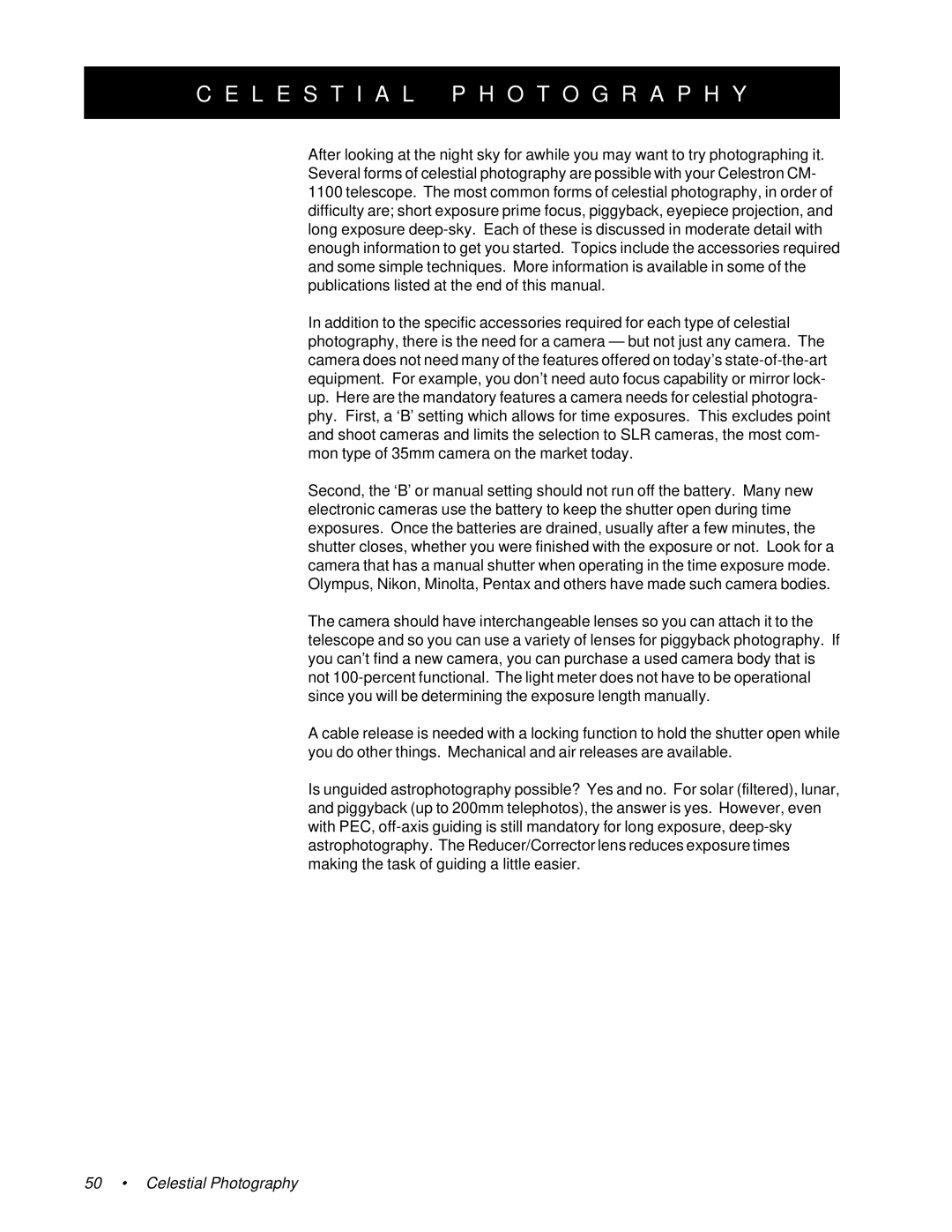C E L E S T I A L P H O T O G R A P H Y
After looking at the night sky for awhile you may want to try photographing it. Several forms of celestial photography are possible with your Celestron CM- 1100 telescope. The most common forms of celestial photography, in order of difficulty are; short exposure prime focus, piggyback, eyepiece projection, and long exposure
In addition to the specific accessories required for each type of celestial photography, there is the need for a camera — but not just any camera. The camera does not need many of the features offered on today’s
Second, the ‘B’ or manual setting should not run off the battery. Many new electronic cameras use the battery to keep the shutter open during time exposures. Once the batteries are drained, usually after a few minutes, the shutter closes, whether you were finished with the exposure or not. Look for a camera that has a manual shutter when operating in the time exposure mode. Olympus, Nikon, Minolta, Pentax and others have made such camera bodies.
The camera should have interchangeable lenses so you can attach it to the telescope and so you can use a variety of lenses for piggyback photography. If you can’t find a new camera, you can purchase a used camera body that is not
A cable release is needed with a locking function to hold the shutter open while you do other things. Mechanical and air releases are available.
Is unguided astrophotography possible? Yes and no. For solar (filtered), lunar, and piggyback (up to 200mm telephotos), the answer is yes. However, even with PEC,
50 • Celestial Photography
